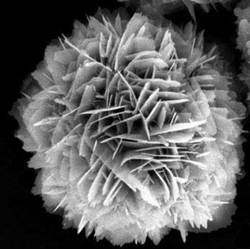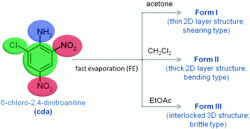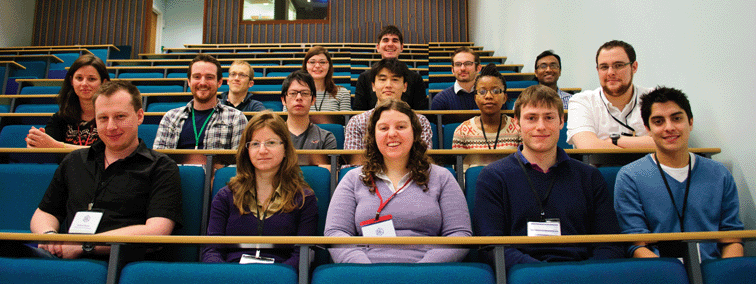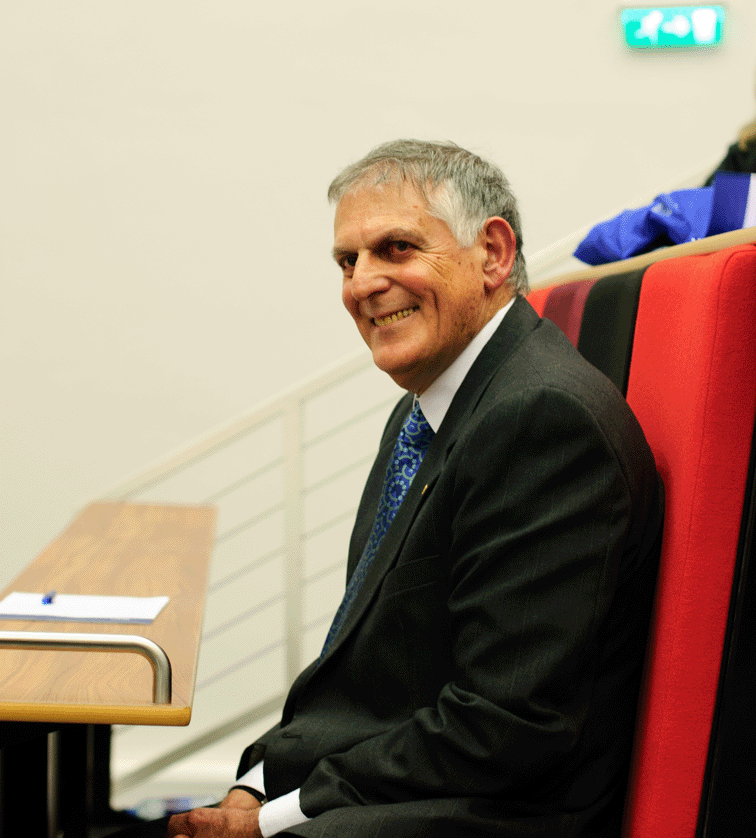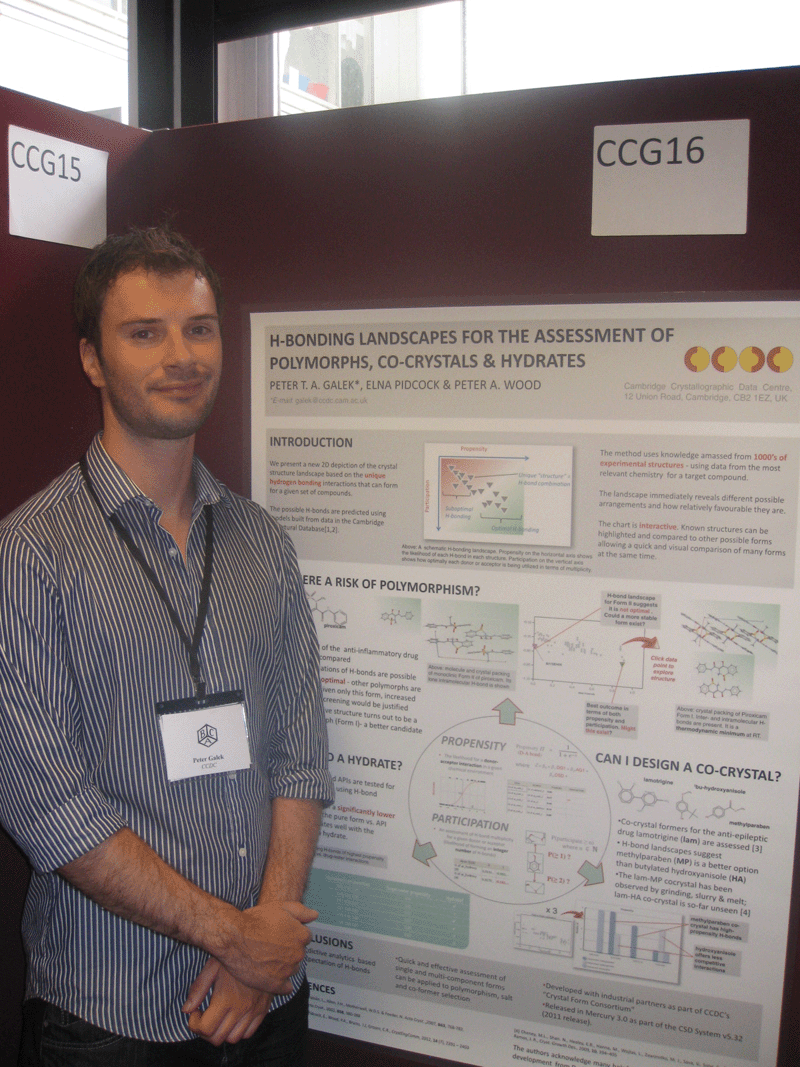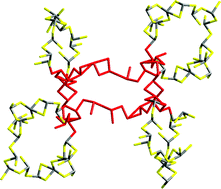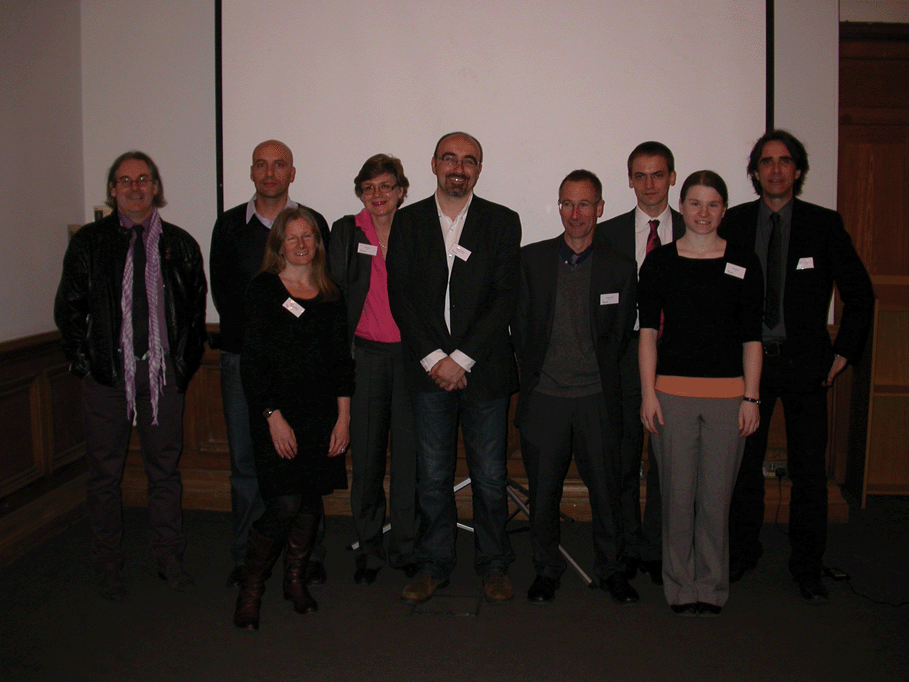 Professor Sally Price works at University College London in the UK. Her group focuses on developing the accurate modelling of intermolecular and intramolecular forces, in order to predict which crystal structures of an organic molecule are thermodynamically feasible. These are contrasted with experimental searches for polymorphs in order to understand the factors which lead to polymorphism, in a multi-disciplinary project “Control and Prediction of the Organic Solid State” (CPOSS – 2012 meeting report to follow soon here on CrystEngComm blog!).
Professor Sally Price works at University College London in the UK. Her group focuses on developing the accurate modelling of intermolecular and intramolecular forces, in order to predict which crystal structures of an organic molecule are thermodynamically feasible. These are contrasted with experimental searches for polymorphs in order to understand the factors which lead to polymorphism, in a multi-disciplinary project “Control and Prediction of the Organic Solid State” (CPOSS – 2012 meeting report to follow soon here on CrystEngComm blog!).
She is on the Crystal Growth and Design Advisory Editorial Board and was a member of the CrystEngComm Editorial Board when the journal was first launched. Here, she talks to CrystEngComm about her near miss as a tax inspector, and her fasincation with the theoretical and atomic level understanding of chemistry.
Why did you want to become a scientist?
I’ve always liked understanding how things fit together – I had a chemistry and a Meccano set as a child. The summer before I started my A-level course, I worked at ICI as a lab technician, and I can recall the reaction of my supervisor when I said I wanted to be a theoretical rather than experimental chemist. At that stage I had barely heard of quantum mechanics, and was only expressing a liking for theory as being able to quantify relationships between measureable properties and make predictions.
What projects are you working on at the moment?
How do we model the forces in flexible organic molecules? The organic solid state is a great challenge to our theories of modelling inter and intramolecular forces adequately.
What do you think will be the next big breakthrough in your field?
It would be a breakthrough if computational chemistry and molecular modelling actually lived up to the hype and expectations, but it should slowly become a reliable complement to experimental work. We still have a long way to go in developing crystallisation science to have a more reliable theory, let alone implement such a theory to predict which crystal structures will form under which conditions. The required breakthrough is probably in understanding nucleation and growth in more realistic systems.
How do you think crystal engineering will develop in the next couple of years?
I subscribe to the dream of being able to design the assembly of new materials with targeted properties, but with the caveat that this will probably be the optimal compromise between the huge range of different properties required. For example, for pharmaceuticals, the primary property is biological effectiveness, and crystal engineering should define the variability in solubility, dissolution rate, mechanical stability, and ability to be formulated into a good delivery system.
What is the most rewarding aspect of your work?
The sheer aesthetic pleasure when various experiments and calculations come together to give an atomic level understanding.
What is the secret to a successful research group?
The people and their commitment to really understanding their research problem. A group with a mutually supportive atmosphere, where everyone helps each other, and feels able to make and receive suggestions and constructive criticisms about each other’s work, will be able to build more effectively on the work in the field.
What achievement are you most proud of?
In science, my more confident predictions of new crystal structures being experimentally verified, such as carbamazepine form V.
What advice would you give to a young scientist?
Write and rewrite your work continually as you are going along. Draft your aims and introduction before you start, add method and results as you are going, stacking up material for the SI, and keep rewriting your arguments and conclusions. Writing it down ensures that you think more clearly and critically about what you are doing, than just talking about it.
What would you do if you weren’t a scientist?
When it looked as if the Research Council (SERC) would not be funding anyone in the round when my postdoc grant was ending, I started investigating becoming a tax inspector. However, the exchange rates fluctuated in the right direction, before I had to find out whether that second choice would have suited. I don’t think it would have provided such a varied and satisfying career.
What is your favourite space group and why?
P1 – easy to visualise
What was your first crystal structure?
I have never solved a crystal structure, let alone prepared a sample. I lack the manual dexterity for experimental work. However, the first crystal structure I studied in detail was chlorine, to show that the anisotropy in the atom-atom repulsion and electrostatics, arising from the lone pair density could account for this structure. It was my first application of the theory of intermolecular forces to modelling crystal structure.
Read more about Sally’s work in the RSC articles below…
Screening for cocrystals of succinic acid and 4-aminobenzoic acid
Nizar Issa , Sarah A. Barnett , Sharmarke Mohamed , Doris E. Braun , Royston C. B. Copley , Derek A. Tocher and Sarah L. Price
CrystEngComm, 2012, 14, 2454-2464
Part of the recent themed issue Crystal engineering and crystallography in the pharmaceutical industry
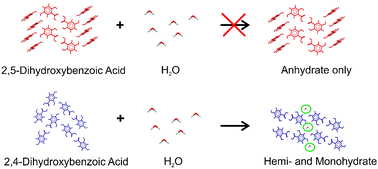 Which, if any, hydrates will crystallise? Predicting hydrate formation of two dihydroxybenzoic acids
Which, if any, hydrates will crystallise? Predicting hydrate formation of two dihydroxybenzoic acids
Doris E. Braun, Panagiotis G. Karamertzanis and Sarah L. Price
Chem. Commun., 2011, 47, 5443-5445
A strategy for producing predicted polymorphs: catemeric carbamazepine form V
Jean-Baptiste Arlin , Louise S. Price , Sarah L. Price and Alastair J. Florence
Chem. Commun., 2011, 47, 7074-7076
Quantifying intermolecular interactions and their use in computational crystal structure prediction
Sarah (Sally) L. Price
CrystEngComm, 2004, 6, 344-353
Comments Off on Interview with Sally Price
 Articles are chosen from:
Articles are chosen from:










